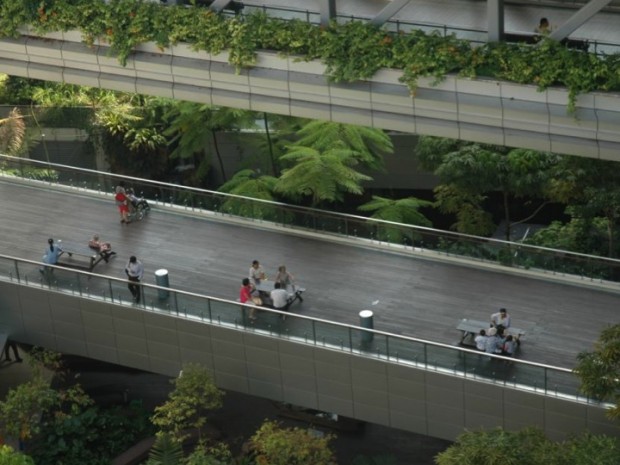
1.5 Harnessing the Potential of Biophilic Urbanism In Australia, an Economic and Policy Investigation

Project Number
1.5Round
Round 1Date
September 2011 - February 2013Research Team

Project Leader
Professor Peter Newman
PhD DipES&T BSc(Hons) FTSE
Curtin University
P.Newman@curtin.edu.au

Project Manager
Dr Charlie Hargroves
BE (Civil), PhD
Curtin University
charlie.hargroves@curtin.edu.au

Dr Cheryl Desha
BE (Env), PhD
Co-Project Leader
Queensland University of Technology
cheryl.desha@qut.edu.au
Documents for Downloading
Briefing Materials
Case Studies
‘Singapore: Biophilic City’ (44:06 YouTube)
Presentations
SBEnrc – Project 1.5 CIB WBC 2013 Presentation Slides CIB WBC Presentation (2.3 Mb)
Australian Green Development Forum Green Speed Learning Session Presentation (4.6 Mb)
The concept of ‘Biophilic Urbanism’, championed by Tim Beatley and Peter Newman for decades, has been used widely to create more liveable and vibrant cities. This field is about to get a significant boost in activity as the realisation grows that natural features can be used as design elements in cities to help respond to climate change. The concept of biophilic urbanism is inspired by E. O. Wilson’s concept of ‘biophilia’ that suggests we have an innate affinity with nature and that increasing nature in cities can lead to many benefits. Studies show that a connection with nature tends to lead to reductions in depression, anger, tension and fatigue.
Having been applied to a number of aspects of psychology and interior design, the concept is now receiving strong interest as an urban design principle, not only for the human well-being benefits, but a range of direct and indirect economic and environmental benefits. Biophilic urbanism has the potential to make significant contributions to a range of national, state and local government policies related to climate change mitigation and adaptation: reducing urban energy consumption, enhancing urban biodiversity, improving resilience to natural disasters, improving worker productivity, and responding to pressures related to densification and revitalisation of cities.
Project partners include: Parsons Brinckerhoff, Western Australia Department of Finance, Townsville City Council (CitySolar Program), and PlantUp.
The research team was led by Professor Peter Newman (Curtin), Charlie Hargroves (Curtin), and Dr. Cheryl Desha (QUT), and included: Angie Reeve (QUT), Omniya Baghdadi (QUT), Megan Bucknum (Curtin), Jana Soderlund (Curtin), Mariela Zingoni (Curtin), and Rob Salter (Curtin), with advice from Professor Tim Beatley (University of Virginia, USA), a world leading biophilic urbanism expert and author of the new book ‘Biophilic Cities’
Project Outcomes
Stakeholder Engagement Report
A series of stakeholder meetings and discussions have been held along with the facilitation of two stakeholder workshops involving over 25 participants, in Perth and Brisbane. The workshops were based on the methodology of ‘Collective Social Learning’, created by Emeritus Professor Valerie Brown, to guide participants through a process to consider first their vision for a biophilic (nature loving) city and the aspects that enable and disable achieving such vision. Following this a brainstorm was undertaken with each workshop group, to inform the research team’s consideration of the various elements of an economic consideration of both direct and in-direct economic benefits and costs of the use of biophilic elements in cities and other urban areas.
Project 1.5 Stakeholder Engagement Report – 2011 (333 kb)
Case Study Assessment
The team is mid-way through a case study investigation of key biophilic urbanism examples in Australia and overseas, to consider both the economic and policy considerations that can inform future use of biophilic elements in Australian cities. This investigation is informed through a number of policy and economic analysis related questions that will ensure a consistent evaluation of what is possible and what precedents can inform future development in Australian cities.











